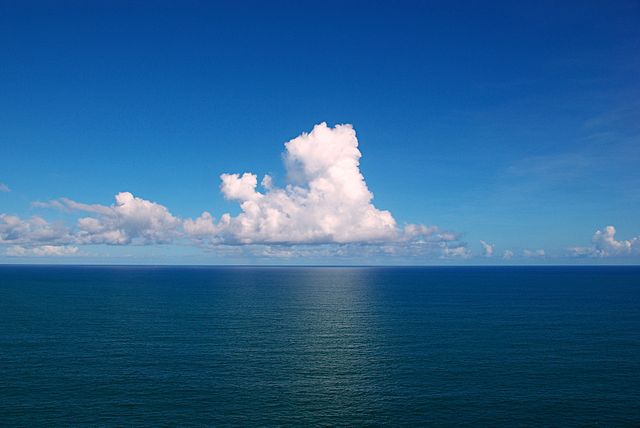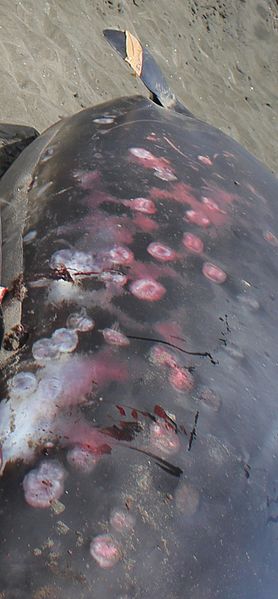
Interactions
The Stenella clymene interacts with many
organisms including both land and marine species. On many
occasions, this dolphin is seen mixed with the common dolphin
(Delphinus delphis) (Weir 2006) as well as the spinner dolphin
(Stenella longirostris) (Jefferson
and Curry 2003). The Stenella clymene often affiliates
itself with other dolphin species and this is most
likely why it is often misidentified as a spinner dolphin.

As a pelagic dolphin, the Stenella clymene seems to have a battling relationship with another deep-sea organism. Multiple studies have found that the Clymene dolphin is frequently attacked by cookie-cutter sharks (Isistius brasiliensis) and that there is an overwhelming majority of Clymene dolphin specimens with bite marks from this shark (Jefferson and Curry 2003; Perrin et al. 1981; Jefferson et al. 1995). Latching onto and biting chunks of flesh off of its hosts, the cookie-cutter shark is a menace to many aquatic species. This includes dolphins like the Stenella clymene as well as sperm whales (Balaenoptera musculus), harp seals (Phagocillus greolandicus), and great white sharks (Carcharodon carcharias) (Shedd 2006).
The Stenella clymene also has parasitic relations with many internal and external parasites. Specimens have been found to host barnacles, whale lice and remora on their flukes, flippers and wounds from injuries (Jefferson and Curry 2003). Phyllobothrium, Monorygma, Nasitrema, Pharurus and Halocercus are all internal parasites that have been observed in the Stenella clymene, and have detrimental effects on the functions of the muscles, brain, blubber and lungs of the animal (Jefferson 2003; Jefferson et al. 1995).
Figure 7. Photograph of a beached whale with multiple cookie-cutter shark scars.
Many observations have found that the Stenella clymene is primarily a night hunter and comes up towards the surface to feed on small squids and fish (Jefferson and Curry 2003; Jefferson et al. 1995). Schooling Atlantic fish such as herring and menhaden are found to be the most abundant fish targets for this dolphin (Jefferson et al. 1995).
Figure 8. School of Atlantic cod, a common food source for the Stenella clymene.
Continue to Interesting Facts
